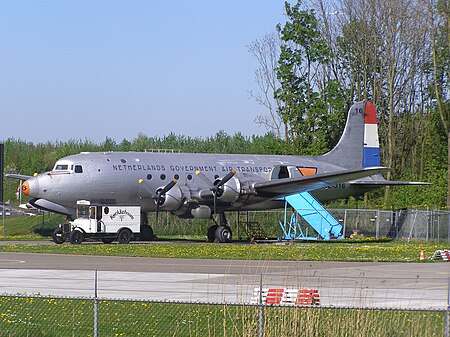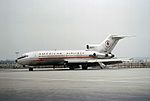1961 Cincinnati Zantop DC-4 crash
1961 in KentuckyAccidents and incidents involving the Douglas DC-4Airliner accidents and incidents caused by pilot errorAirliner accidents and incidents in KentuckyAviation accidents and incidents in the United States in 1961 ... and 4 more
Cincinnati/Northern Kentucky International AirportNovember 1961 events in the United StatesUse mdy dates from December 2018Zantop Air Transport accidents and incidents

A Zantop Air Transport Douglas DC-4 was on its final approach to Greater Cincinnati Airport runway 18 (now runway 18C), when it clipped some trees and crashed into a wooded area north of the airport. This was the first of at least three aircraft on their final approach that failed to reach runway 18 at the Greater Cincinnati Airport, becoming victims of the area's hilly terrain with steep changes in elevation from the Ohio River, the others being American Airlines Flight 383 and TWA Flight 128.
Excerpt from the Wikipedia article 1961 Cincinnati Zantop DC-4 crash (License: CC BY-SA 3.0, Authors, Images).1961 Cincinnati Zantop DC-4 crash
Old Wendell Ford Boulevard,
Geographical coordinates (GPS) Address Website Nearby Places Show on map
Geographical coordinates (GPS)
| Latitude | Longitude |
|---|---|
| N 39.048888888889 ° | E -84.667777777778 ° |
Address
Cincinnati/Northern Kentucky International Airport (Greater Cincinnati International Airport)
Old Wendell Ford Boulevard
41025
Kentucky, United States
Open on Google Maps





